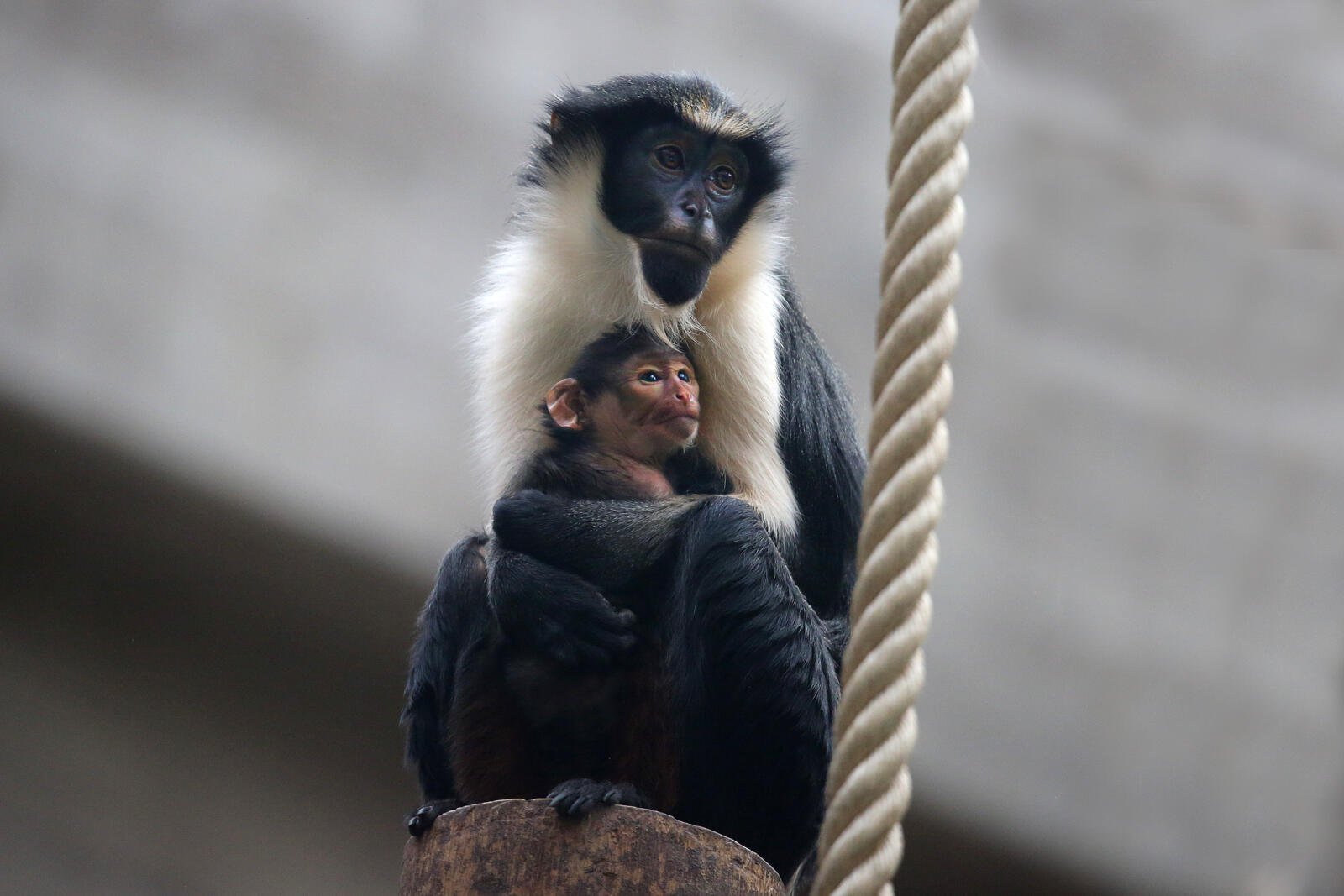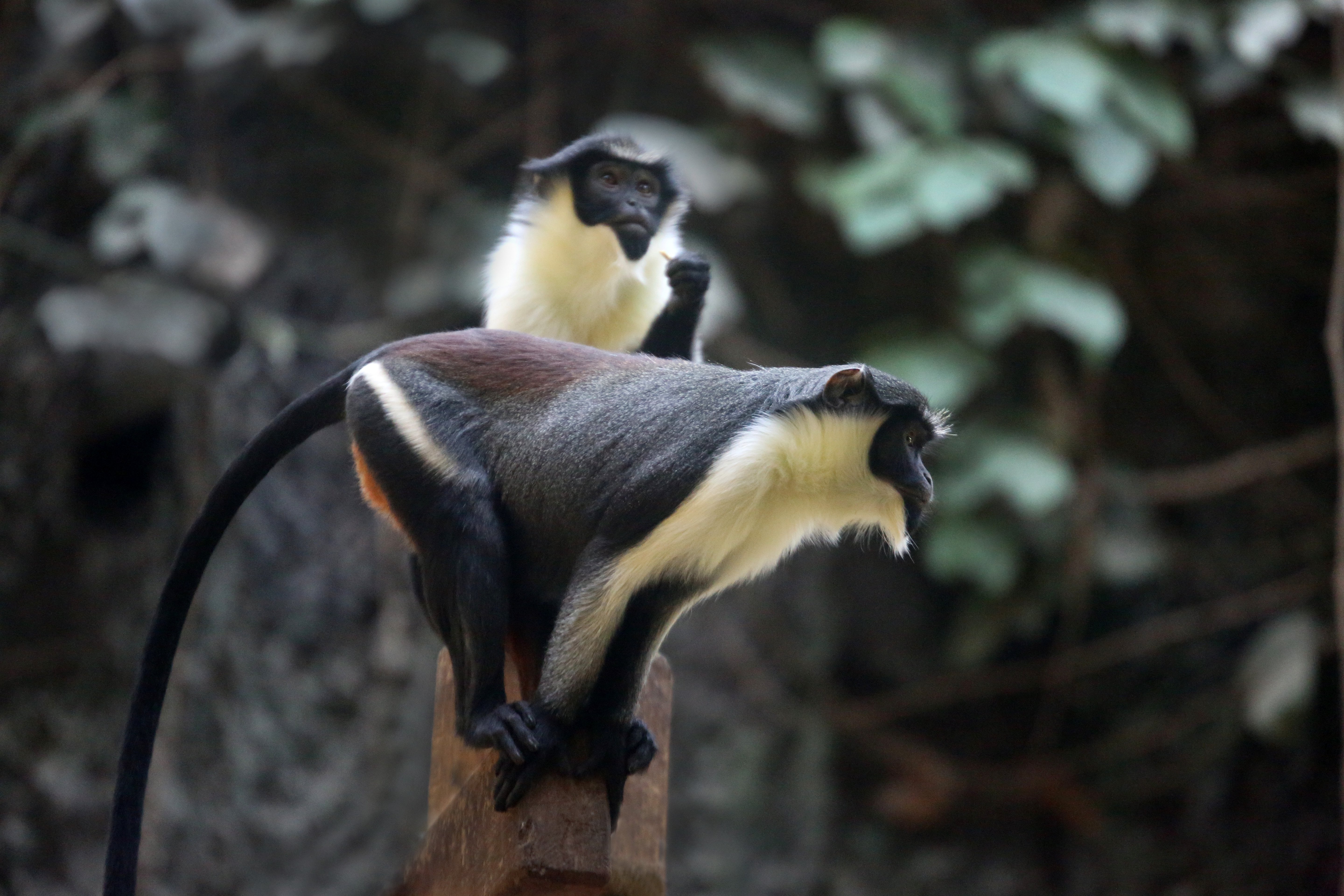
© ARTIS, Ronald van Weeren
Endangered Diana monkey born at ARTIS
– March 6, 2024
The young Diana monkey, born just before the weekend, is doing well. The mother holds her young tightly on her belly. They stay inseparable like this for the first four weeks. The Diana monkey is one of the most endangered but also one of the least known African monkeys. The Diana monkeys at ARTIS Zoo are part of the international endangered species programme. Moreover, ARTIS and other zoos are collaborating with local conservation organisation WAPCA, to better protect the Diana monkey in West Africa.
The young had just been born when zookeeper Sandra de Groot arrived at the enclosure. 'Normally they are very vocal, but for a moment you could hear a pin drop in the enclosure. The mother had immediately taken care of her young and licked it clean. Her sister, possibly also an expectant mother, came to watch curiously. The young is already quite large and therefore easy for visitors to see.'
Living together
Diana monkeys are good climbers and they live high up in trees. They live in large groups to better defend themselves and warn each other in case of danger. Diana monkeys take this a step further: they live with other primate species and can even understand the sounds of other species.

Fragmented population
The habitat of the Diana monkey in West Africa has shrunk significantly over the past 30 years. Hunting of the monkeys is common because of their valuable fur. Even more threatening is the fragmentation of their habitat due to deforestation for timber production and agriculture. This results in smaller subpopulations, whose long-term genetic health is compromised. Managing a healthy population in zoos, both internationally and in Africa, can help rebuild wildlife populations in the long term.
WAPCA
WAPCA (West African Primate Conservation Action) works in Ghana and Côte d'Ivoire to conserve and protect endangered primates such as the Diana monkey. ARTIS contributes annually to research and conservation work coordinated by WAPCA at Tai National Park in Côte d'Ivoire. This park is one of the last strongholds for 11 primate species, including chimpanzees and the Diana monkey.
Thanks to partners, WAPCA has increased the capacity of guards, launched local awareness programmes and is conducting research. In addition, the presence of researchers is already indirectly protecting primates and reducing poaching. Now a structural plan for successful conservation of these primate species is being developed. Zoos and local conservation organisations are increasingly working together and joining forces for this purpose.
